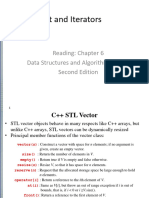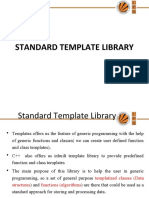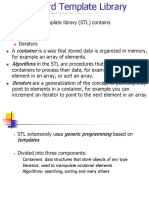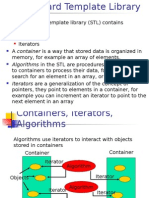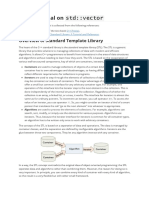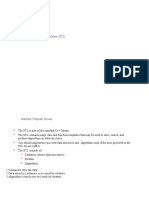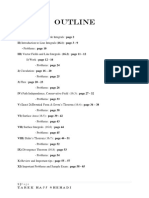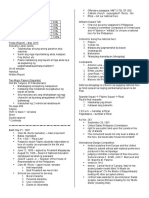0% found this document useful (0 votes)
36 views24 pagesSTL Vector
The document provides an introduction to the C++ Standard Template Library (STL), which includes containers, algorithms, and iterators that enhance the functionality of C++. It highlights the benefits of using STL, such as automatic resizing of containers, built-in algorithms, and extensibility for user-defined containers and algorithms. Additionally, it includes examples of using vectors, sorting data, and basic operations on vectors.
Uploaded by
teekshitta.rCopyright
© © All Rights Reserved
We take content rights seriously. If you suspect this is your content, claim it here.
Available Formats
Download as PPT, PDF, TXT or read online on Scribd
0% found this document useful (0 votes)
36 views24 pagesSTL Vector
The document provides an introduction to the C++ Standard Template Library (STL), which includes containers, algorithms, and iterators that enhance the functionality of C++. It highlights the benefits of using STL, such as automatic resizing of containers, built-in algorithms, and extensibility for user-defined containers and algorithms. Additionally, it includes examples of using vectors, sorting data, and basic operations on vectors.
Uploaded by
teekshitta.rCopyright
© © All Rights Reserved
We take content rights seriously. If you suspect this is your content, claim it here.
Available Formats
Download as PPT, PDF, TXT or read online on Scribd
/ 24


